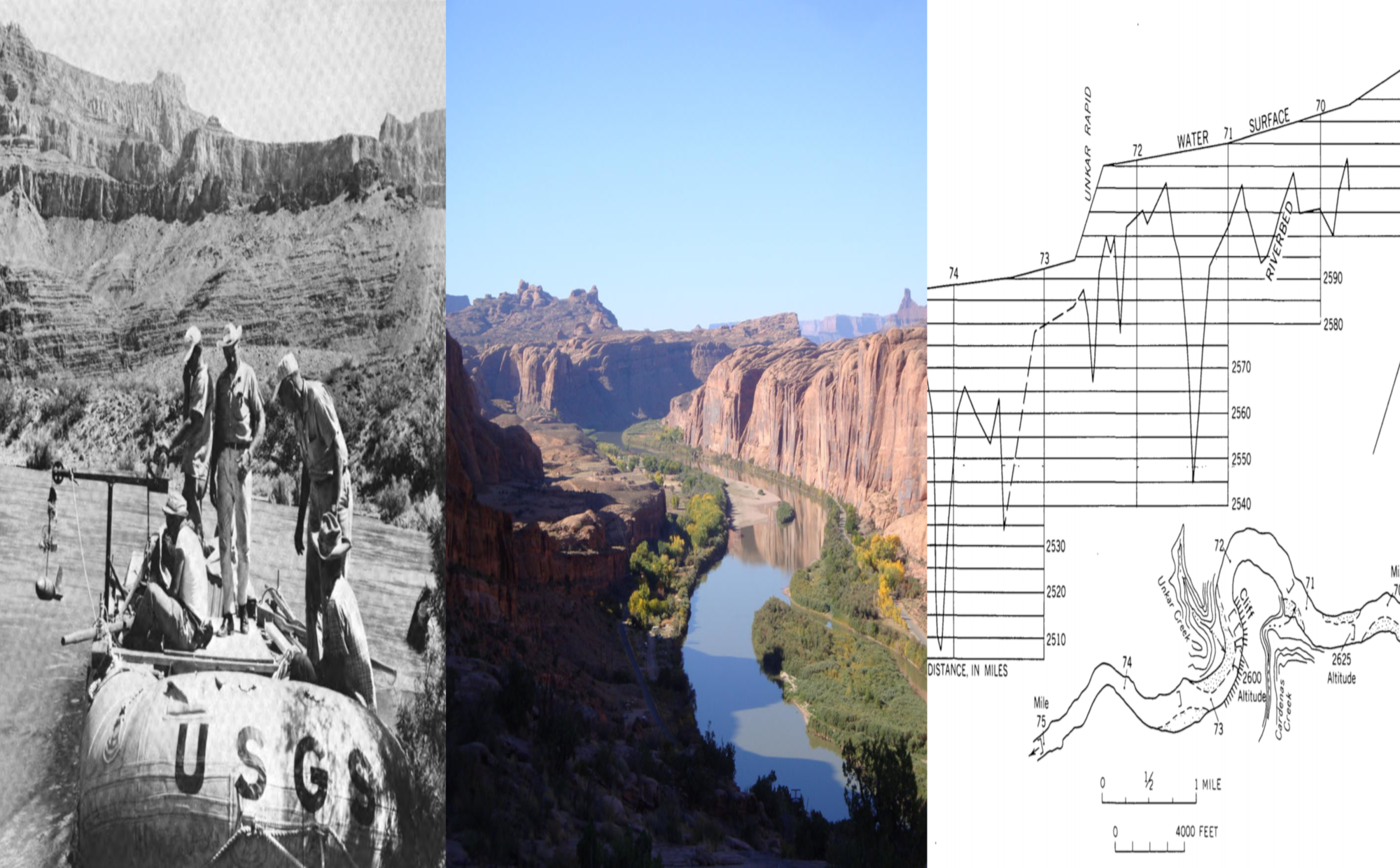Articles
Etienne S. Benson, “Random river: Luna Leopold and the promise of chance in fluvial geomorphology,” Journal of Historical Geography, online 8 November 2019. (link)
Abstract
Luna B. Leopold was a hydrologist and fluvial geomorphologist who headed the Water Resource Division of the U.S. Geological Survey from 1957 to 1966 and was one of the leaders of the postwar quantitative revolution in geomorphology. Like other quantitative geomorphologists of his generation, he turned to numbers partly to strengthen his professional authority in policy debates, particularly those concerning a looming ‘water crisis’ in the United States. This paper traces the traces the evolution of Leopold’s thought from the 1950s to the 1970s, when he turned from seeking universal empirical regularities in river processes to arguing that fluvial systems were inherently indeterminate and unpredictable. While this position was largely rejected by Leopold’s scientific colleagues, it was embraced by members of the emerging environmental movement, for whom Leopold’s stochastic understanding of rivers provided a seemingly authoritative rationale for the position that complete control and prediction of river systems would always remain out of reach. More broadly, this case shows how quantitative imprecision and uncertainty can sometimes be advantageous for experts seeking to establish authority in a contested policy domain.
Etienne S. Benson, “Re-situating fieldwork and re-narrating disciplinary history in global mega-geomorphology,” Studies in History and Philosophy of Science Part A 70 ( 2018) : 28-37 (link) Abstract
In 1985, more than thirty geomorphologists, planetary scientists, and remote sensing specialists gathered at a conference center in Oracle, Arizona, to discuss an emerging area of research that they called “mega-geomorphology.” Building on a conference of the same name held in London in 1981, they argued that new techniques of remote sensing and insights emerging from the study of extraterrestrial planets had created opportunities for geomorphology to broaden its spatial and temporal scope. This new approach was, however, neither unproblematic nor uncontested. In the discussions around mega-geomorphology that took place in the mid-1980s, the perceived conflict between the use of remote-sensing techniques to observe phenomena on vast spatial scales, on one hand, and the disciplinary centrality of fieldwork and field experience to geomorphology, on the other, was a recurrent theme. In response, mega-geomorphologists attempted to re-situate fieldwork and re-narrate disciplinary histories in such a way as to make remote sensing and planetary science not only compatible with geomorphological traditions but also means of revitalizing them. Only partially successful, these attempts reveal that the process of adopting a planetary perspective in geomorphology, as in other earth sciences, was neither straightforward nor inevitable. They also show how the field and fieldwork could remain central to geomorphology while also being extensively revised in light of new technical possibilities and theoretical frameworks.
Talks
Etienne S. Benson, “Sensing a River: Labor, Instruments, and Affect in Fluvial Geomorphology.” Part of Sense, Sentience, Sensors: An Interdisciplinary Conversation on Sensor Technology, Johns Hopkins University, March 6, 2020.
Etienne S. Benson, “Bagnold and Leopold on the Colorado,” American Geophysical Union, San Francisco, Dec. 12, 2019.
Etienne S. Benson, “The Data of Development: North-South Tensions in the International Hydrological Decade, 1965-1974,” History of Science Society, Utrecht, July 24, 2019.
Etienne S. Benson, “Geomorphology, Empire, and the Earth without History,” Conference on The Right Use of the Earth, Paris, May 30, 2018.
Etienne S. Benson, “Envirotechniques of ‘Direct’ Experience in Global Mega-Geomorphology,” History of Science Society, Toronto, Nov. 10, 2017.
Etienne S. Benson, “Direct Experience and the Envirotechniques of Global Mega-Geomorphology,” Society for the History of Technology, Philadelphia, Oct. 28, 2017.
Etienne S. Benson, “The Times of Sand,” American Society for Environmental History, Chicago, Apr. 1, 2017.
